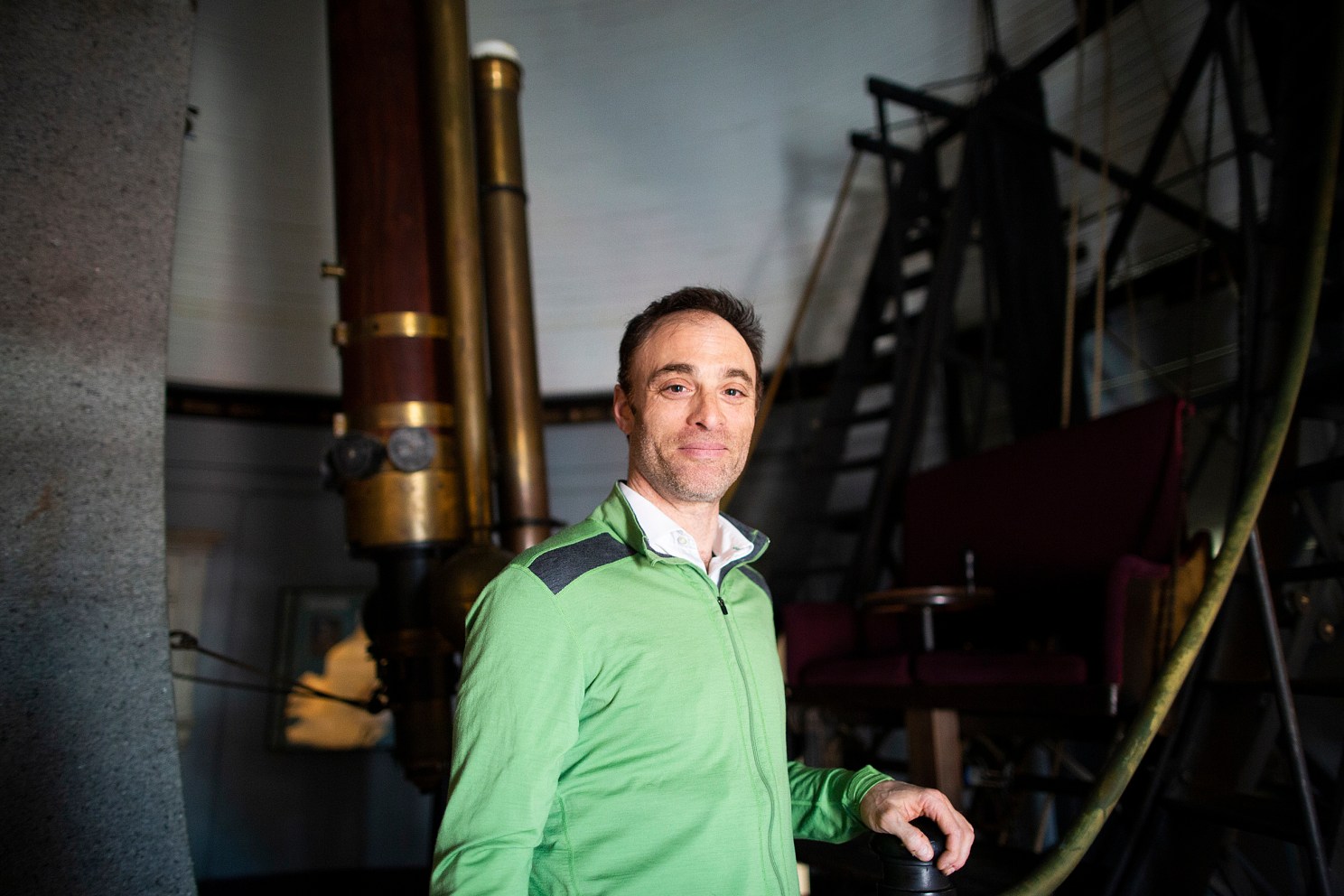Sheperd Doeleman awarded National Academy of Sciences Henry Draper Medal

Stephanie Mitchell/Harvard file photo
Sheperd (Shep) Doeleman, an astrophysicist at the Center for Astrophysics | Harvard & Smithsonian, has been named the recipient of the National Academy of Sciences’ 2021 Henry Draper Medal. As founding director of the Event Horizon Telescope (EHT), Doeleman is widely known for his pivotal role in capturing the first image of a supermassive black hole in 2019.
This year’s Henry Draper Medal recognizes Doeleman’s vision and decades-long leadership in developing the instruments and global telescope arrays necessary to produce the world’s first black hole image.
“It’s an honor and quite humbling to receive the medal. To bring a black hole into focus has been the central theme of my career, and to capture the image was really a dream fulfilled,” Doeleman says. “At the same time, the EHT could not have achieved its goals without the exceptionally hard work and dedication of the entire collaboration. It has been an absolute privilege and joy to work with teams at MIT, the CfA, and across the U.S. and world on this grand scientific adventure. When we saw the telltale ‘shadow,’ a ring of light bent in the immense gravity of black hole, we were all speechless.”
Awarded every four years, the Henry Draper Medal is presented with a $25,000 cash prize. Doeleman will share the award with Heino Falcke of Radboud University.
“There is no more spectacular scientific result than the iconic image of the supermassive black hole in the center of galaxy M87,” said Charles Alcock, director of the Center for Astrophysics. “I’d like to extend my sincere congratulations to both Doeleman and Falcke for their greatly deserved recognition with the Henry Draper Medal.”
Spearheaded by Doeleman, the EHT project started as a small group of just 10 to 20 researchers in the 2000s. The hard work paid off in 2008 when Doeleman and his team used their new technology to measure the size of Sagittarius A*, the supermassive black hole in the center of our Milky Way galaxy. Four years later, the team glimpsed a spinning black hole that powers a cosmic jet of material erupting from the heart of galaxy M87. The success confirmed that visualizing a black hole was both technically and scientifically possible, launching Doeleman on a voyage to capture the first image of one.
By 2017, the EHT had exploded into a massive border-hopping team of more than 300 people, each working at various facilities to build and synchronize a global array of radio dishes that formed a virtual, Earth-sized telescope. The final array was composed of eight observatories, including locations in Hawaii, Chile, Mexico, Arizona, the South Pole and Spain.
“No one knew if the black hole shadow would be observable,” said France Cordova, physicist and 14th director of the National Science Foundation. “It took belief and courage on Shep’s part to persist with this project and to aggregate a diverse and passionate team, all in the face of funding challenges and doubts on the part of some about whether the objectives could be accomplished.”
In April 2019, however, Doeleman’s vision finally became reality when his team unveiled the first direct, visual evidence of a supermassive black hole and its shadow. The image made the front page of hundreds of newspapers around the world and led to some of the world’s most respected scientific awards, including the 2020 Breakthrough Prize in fundamental physics; the American Astronomical Society’s 2020 Bruno Rossi Prize; the NSF’s 2019 Diamond Achievement Award; and now, the Henry Draper Medal.
Doeleman and Falcke will be formally presented with the award at the annual meeting of the National Academy of Sciences in April 2021.
“Many people made important contributions to the Event Horizon Telescope,” Cordova said. “At the same time, we should recognize the herculean efforts of the pioneer who took risks, both in career and in intellectual focus, to champion and launch a new, extremely technically challenging approach in observational astronomy — with a result that simply astounded the world.”





